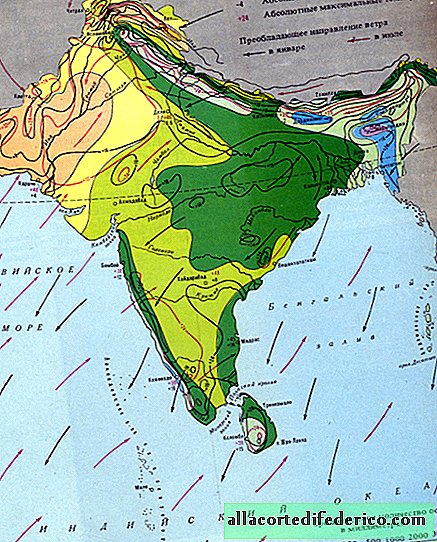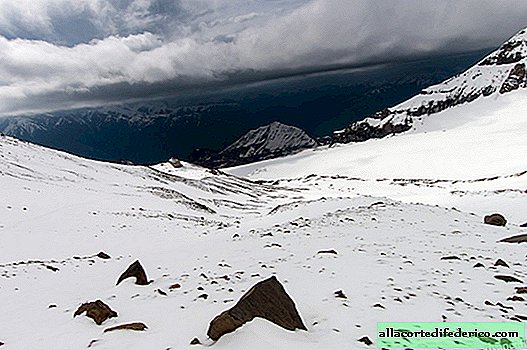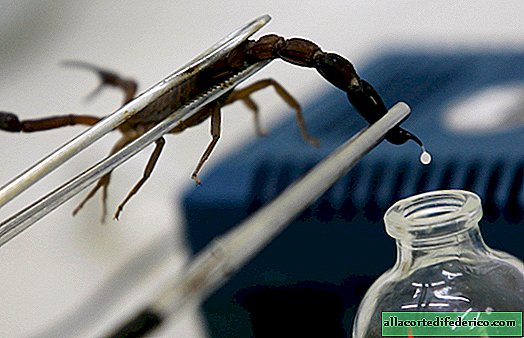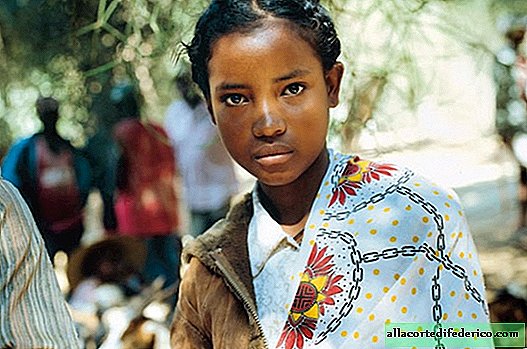Cherrapunji - a city where it rains almost all the time
This small town with a population of about 10,000 people is located in the north-east of India in the state of Meghalaya. Cherrapunji is known worldwide as the wettest place on our planet. On average, 11,700 mm of precipitation falls here per year - this is more than anywhere else on Earth. For comparison, in rainy St. Petersburg this figure is only 660 mm per year, in Vladivostok - 840 mm, and in Petropavlovsk-Kamchatsky - 1150 mm. Cherrapunji owns not only a multi-year average annual record, but also an absolute record for the amount of precipitation that fell during the year. In 1981, this figure was 26,400 mm.

But how did it happen that it was the abysses of heaven that opened over Cherrapunji and that such rain would fall on the head of its inhabitants? It's all about the monsoon climate and the location of the city at the foot of the highest mountains in the world - the Himalayas. The tropical monsoon type of climate prevails in this part of the globe. Monsoons are steady seasonal winds that change direction twice a year. In winter, they blow from land towards the ocean, and the dry season begins on this territory. And in summer, monsoons blow from the Indian Ocean, then with the arrival of moist air masses the rainy season begins. The warm air masses that form over the Bay of Bengal move towards the continent in summer. Air saturated with moisture meets the steep mountain slopes of the Himalayas with a height of 7000-8000 meters. Rising up the slope, the air cools, there is condensation of water vapor and precipitation in the form of rain. The uniqueness of this process in Cherrapunji can be explained precisely by the presence of such an alpine barrier in the path of humid air. In Russia, there is a place with a similar principle of precipitation. These are the western slopes of the Greater Caucasus, which delay the western air masses. Here, on the windward side of the mountains, the largest amount of precipitation in our country is 3,700 mm per year.

Incredibly, there are droughts in the rainiest place on Earth. The period with the minimum rainfall in Cherrapunji falls on the winter months and lasts from November to February, when it rains only from 10 to 70 mm per month. Ditches have been dug along the driveways in this city, draining excess moisture down the slope. It is mainly inhabited by representatives of the Khashi people. They are somewhat different from the Indians in appearance and lifestyle. Residents of Cherrapunji profess Catholicism, and women wear short haircuts. Due to constant rains, the soil in these parts is extremely poor in humus: the entire fertile layer is carried away by moisture streams. But, despite some inconvenience, the inhabitants of Cherrapunji are proud that they live in such a unique place.

















